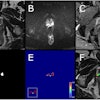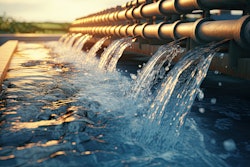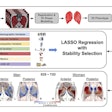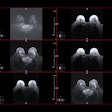New research has found that pollution from gadolinium-based contrast agents (GBCAs) used in MRI increased 7.7 times over two decades in the Tone River, located north of Tokyo.
"Between 1996 and 2020, the number of MRI units per million people in Japan increased by about 2.5 times, so I would have expected some increase, but 7.7 times was a surprise," radiologist and lead author Dr. Soma Kumasaka told AuntMinnieEurope.com.
The effects on the human body of oral intake of gadolinium originating in the medical field are not yet fully understood, so healthcare professionals, including radiologists, should know that anthropogenic -- referring to environmental change caused or influenced by people, either directly or indirectly -- gadolinium is on the rise, added Kumasaka, from Gunma University Graduate School of Medicine, Japan, and the University of Nottingham, U.K.
"But actually, I think there is only so much we can do. We can use contrast media with low gadolinium content or avoid performing tests that are not necessary in the first place, but I don't think we can stop the number of MRI scans from continuing to increase," noted Kumasaka. "What is more important will be the development of technology, environmental improvements, and legislation to prevent anthropogenic gadolinium from dripping into the aquatic environment."
The group of six authors, three of whom are radiologists, published their results on 24 May in Experimental European Radiology. They collected the water samples on 9 and 10 August 2020, using a drone to record the locations of sampling points at 15 different spots on the Tone River, which is in the Kantō region. The Tone is around 320 km in length and has the largest drainage area of any river in Japan at more than 16,800 sq. km.
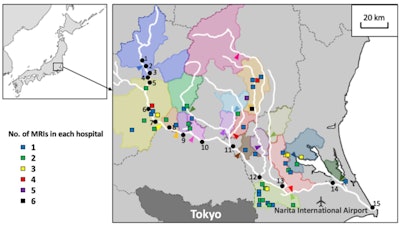 The location of major hospitals in each wastewater treatment area. The colored area indicates each wastewater treatment area, while the arrowhead indicates the locations of each wastewater treatment plant (WWTP) output. Each square symbol represents a general hospital with more than 300 beds. The color of the square symbols represents the number of magnetic resonance imaging units owned by each hospital. Figure courtesy of Dr. Soma Kumasaka et al and European Radiology Experimental.
The location of major hospitals in each wastewater treatment area. The colored area indicates each wastewater treatment area, while the arrowhead indicates the locations of each wastewater treatment plant (WWTP) output. Each square symbol represents a general hospital with more than 300 beds. The color of the square symbols represents the number of magnetic resonance imaging units owned by each hospital. Figure courtesy of Dr. Soma Kumasaka et al and European Radiology Experimental.
The team measured concentrations of the rare earth elements by inductively coupled plasma-mass spectrometry. The study revealed notable anomalies of gadolinium concentrations in the river, with strong positive correlations to the number of major hospitals and MRI units. Compared with the previous report in 2000, the gadolinium anomaly in the Tone River increased from 851% (sampled in 1996) to 6,545%, i.e., 7.7 times, reflecting the increased use of GBCAs in hospitals.
The results underline the importance of more extensive research on anthropogenic gadolinium, and investigations of risks to human health as well as the development of effective removal technologies may be necessary, according to the authors.
"It would be easy to do similar studies in other rivers, but I honestly don't see the clinical and scientific value in the results," Kumasaka told AuntMinnieEurope.com. "I would like to study the mechanism of why macrocyclic GBCAs, which are known to be highly stable, precipitate in rivers. I would also like to study the effects on human health.
You can read the full study here.




